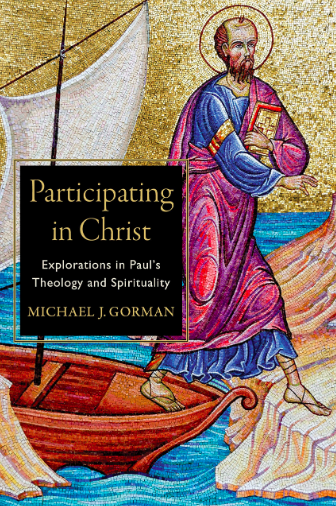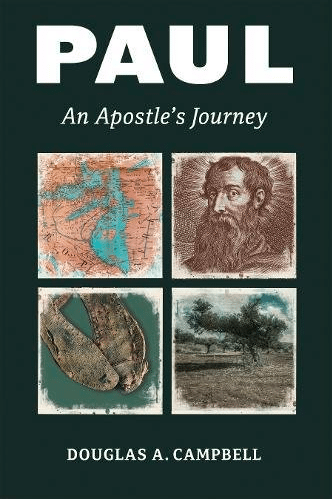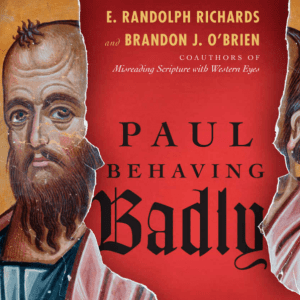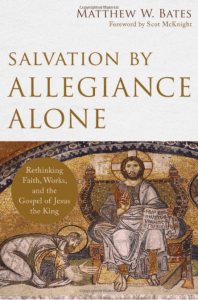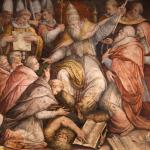 For NT Wright the whole “Paul project” is to learn to see Paul as carrying Israel’s Story but seeing that Story being reworked, revised and reimagined in Christ and in the Spirit … and hence, too, what is meant by justification. There are some debates amongst evangelicals today — like is justification before union or union with Christ first, and what does that mean for either doctrine, and how central double imputation is to justification, and if “transformation” is at work in the word “justification.” Wright, in his Paul and the Faithfulness of God, weighs in on each but does so by way of transforming the whole discussion.
For NT Wright the whole “Paul project” is to learn to see Paul as carrying Israel’s Story but seeing that Story being reworked, revised and reimagined in Christ and in the Spirit … and hence, too, what is meant by justification. There are some debates amongst evangelicals today — like is justification before union or union with Christ first, and what does that mean for either doctrine, and how central double imputation is to justification, and if “transformation” is at work in the word “justification.” Wright, in his Paul and the Faithfulness of God, weighs in on each but does so by way of transforming the whole discussion.
What I will do today is clip sections of Wright’s important overall setting forth of how he understands justification. So here goes, and this is from pp. 925-966, but there are nuances all over his explanations so please get the book and read this section — it will be at the heart of Pauline debates for a decade:
1. God the creator intends at the last to remake the creation, righting all wrongs and filling the world with his own presence. This is the ‘end’ or ‘goal’, the ‘eschaton’, towards which God is working. This is ‘eschatology’: perhaps specifically ‘creational eschatology’, distinct from (say) a ‘gnostic’ eschatology which would look for a future in which the created order was abandoned rather than rectified. We shall study this further in the next chapter. Paul’s overarching statement of hope is seen most fully in Romans 8 and 1 Corinthians 15. Once that larger picture is grasped it can be glimpsed in many other passages, such as Philippians 3.20–21. The creator’s intention to do this, and his ‘justice’ in putting things right, is what stands behind the mediaeval idea of a ‘iustitia distributiva’ by which the one God rewards the good and punishes evil.
2. For this to happen, humans themselves have to be ‘put right’. The main problem standing in the way both of the original purpose of creation and (now) of its renewal and restoration is the failure of humankind to act as God’s imagebearers in the world. God must therefore put humans to rights in order to put the world to rights. (One might call this focus ‘anthropological eschatology’.) This problem is due to human idolatry, and to the consequent fracturing of human beha- viour, which means that humans have failed to bring the creator’s fruitful ordering to bear on the world.
3. God’s way of accomplishing this is through the covenant. God’s purpose of rectifying the world, setting it to rights, following the failure of humans and the corruption of the world, was focused on the call to Abraham and his ‘seed’.
4. This is how the creator God will put humans to rights. The covenant will be the means of sorting out the problem of universal human idolatry and sin. Because of the failure of humans and the corruption of creation, when the creator puts things to rights, ‘rectifies’ the situa- tion, he will be acting in the way a human judge acts when re-estab- lishing ‘justice’ in a community. The case will be tried. The verdict will be reached, announced and implemented. In human courts in ancient Israel, this means declaring one party ‘in the wrong’ and the other party ‘in the right’….We thus find, in Paul, ‘covenantal and forensic eschatology’, and, with that, a further depth in the phrase ‘the righteousness of God’. This God will not only act in fidelity to the covenant; when he does so, that will be the means by which he will put all things right, like a judge finally settling a case. The forensic meaning of the divine righteousness thus originated in the covenantal context in the first place (Israel’s belief in the ultimate justice of the one God; Israel’s appeal to that ultimate justice as the source of rescue and vindication), and belongs closely with it. If, of course, the covenantal narrative is confronted with the problem that the covenant people, like everyone else, are sinful and guilty before the divine tribunal, the forensic setting will not only make that clear but also offer the appropriate model for displaying the divine solution. Part of the reason why Romans 1.18— 4.25, and especially 3.21–31, are as dense and complex as they are is because both of these things, covenant and law court, are being dis- cussed together.
5. All these themes point forward to the decisive divine judgment on the last day, in other words, to ‘final eschatology’. Paul in many passages reaffirms the basic Jewish belief, summing up all the previous four points: (1) there will come a day when the creator will finally call the whole world to account and ‘rectify’ it at last; (2) this will include the final ‘rectification’ of human beings, in other words, their reconstitution as fully human beings, through the resurrection, so that they will share the creator’s rule in the new world; (3) this will be the ultimate fulfilment of the Abrahamic covenant, the moment when the creator and covenant God blesses the whole world through Abra- ham’s ‘seed’, fully, finally and for ever; (4) the resurrection, i.e. the rescue from death itself and the ultimate reconstitution of image- bearing humans, is to be seen as their ultimate vindication in the legal, forensic sense. All this will come about because the creator God, who is also the covenant God, will at the last demonstrate his faithful- ness to the covenant and hence also to the creation. To pull these apart – and with them some key passages in Paul’s letters – is to place dogma ahead of historical exegesis.
6. The events concerning Jesus the Messiah are the revelation, in unique and decisive action, of the divine righteousness. Everything depends – literally, logically, personally and above all theologically – upon this. The long-awaited future event has come forward into the present in the Messiah (as expounded, in relation to the Messiah himself, in chapter 9 above). This means that the one God has displayed his dikaiosynē in both senses (covenant faithfulness and forensic justice, tightly interwoven, and together working for the rectification of the whole creation) in the events concerning Jesus. He has condemned sin in his flesh, and has vindicated Jesus himself in his resurrection, marking him out as Israel’s Messiah and hence as the bearer of the Israel-shaped covenant purpose. This God has thereby fulfilled his Israel-plan in the Messiah, whose death and resurrection are the instruments of this purpose and the first instantiation of it (in the sense that Jesus’ death is the condemnation of sin and that his resurrection is the beginning of the new creation). He has decisively launched the creator’s project of putting the world itself to rights.
7. When Paul speaks about people being ‘justified’ in the present, he is drawing on the framework of eschatological, forensic, participatory and covenantal thought I have sketched above. He does so in order to insist, from a variety of angles because of the different arguments he is mounting, that in the present time the covenant God declares ‘in the right’, ‘within the covenant’, all those who hear, believe and obey ‘the gospel’ of Jesus the Messiah.473 The future verdict (point 5) is thus brought forward into the present, because of the utter grace of the one God seen in the ‘faithful’ death of the Messiah (point 6) and then at work, as we shall now see, through the spirit in the gospel.






